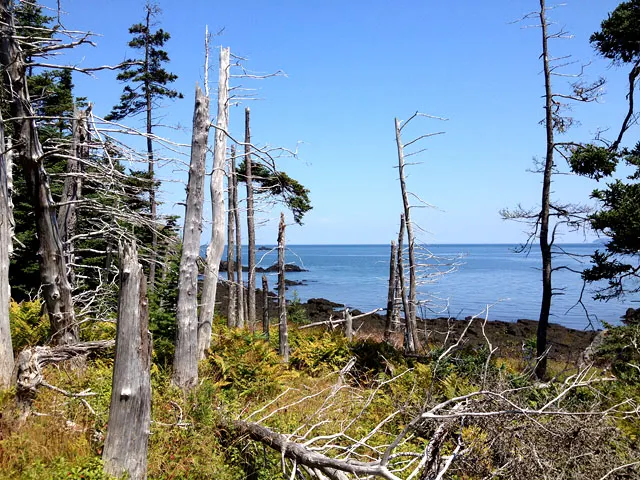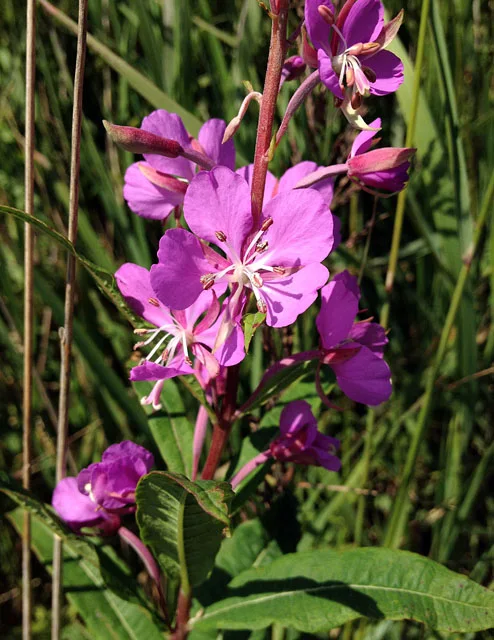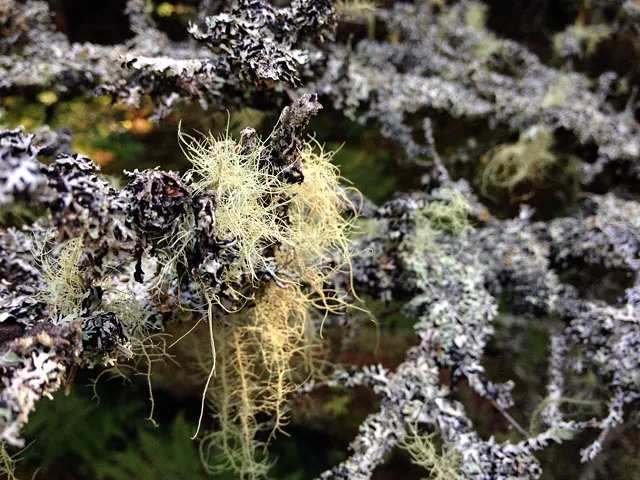Quoddy
Time being what it is, several images and a few thoughts are all I can put to post. Enjoy. Visit the northeastern most region of Maine sometime. As raw, wild, yet accessible, as the east coast gets.
Sun to the south east, we begin our hike.
In just a few steps we are in a balsam fir and white spruce forest, moss floor dappled, stunning.
Where the sun made headway, woodland asters were in bloom.
And recent rains had inspired mushrooms to fruit.
Is there no better way to see mushrooms than floating above a mossy carpet?
There were several plots of thick clover cover deep in the woods. It appeared out of place, and I wonder if it has anything to do with this.
Out of the woods, onto the cliffs.
I believe a cranberry flower (crane -berry), cliffside.
A memorial, a mystery, and a severe case of deja vu. We emerged from the forest onto a promontory full of drying grasses and a green, leafy plants in flower. To the north, a little bronze plaque memorializing a woman, who's name escapes me but had a distinctive Slavic sound (ys, zs, cs, and ws), adorned a boulder facing the sea. The flowering plant, again, appeared out of place. It looked like celery! Tear and sniff, too strong for celery, but Lovage? The plaque said that this was the favorite spot of the woman it memorialized. Lovage is a favorite of eastern European cooking. Could she have planted it here? Was it her favorite place, not only for the sea and cliffs, first sunrise in the east, but also because her favorite pot herb was growing rather wildly? I have no idea, but then, a consuming feeling as if I had been in this exact spot before. What is this all about. I had intended to make my way up the coast for years, but never made it past Schoodic Point. Had I encountered a similar cliffside and Lovage growth further down east?
Deaths from ocean spray whipped up by the Groundhog Day Gale of 1976.
While the invasive purple loosestrife was in bloom, so was the fireweed, Epilobium angustifolium.
A spectacular alternative.
Old Man's Beard, Treemoss, Usnea spp. -a symbiosos of fungus and alga.
Again, Indian Pipe, pearlescent white atop green velour.
A spectacular alternative.
Off to the bog, we rested, lounging lengthwise down the planks through a wetland. While there were several benches along the coastline, there were none within the woods.
Moss-blanketed forest with emergent Indian Pipe, Monotropa uniflora.
The sun now toward the west, we left Quoddy Head for Lubec -population 1359, bridge to Canada, and three eateries. Did you know that there are three spices in Maine? Salt, pepper, and fried. Keep it simple, stick to Maine's natural resources -lobster, potatoes, milk, blueberries. Although they do breakfast well, bring your own coffee.
Next post -the bog.





















You've got me drooling.
ReplyDeleteSuch gorgeous photos. Your hike/photo essay made my day. Thanks.
ReplyDeleteNot clover, but Oxalis, Wood-sorrel. The notched/heart-shaped leaves are a key. Clover has round leaves.
ReplyDeleteBeautiful location. I've been to that region of Maine. It is spectacular.
Not clover, but Oxalis, Wood-sorrel. The heart-shaped leaves are a key. Clover has round leaves.
ReplyDeleteMaine is spectacular, especially the glaciated coast.